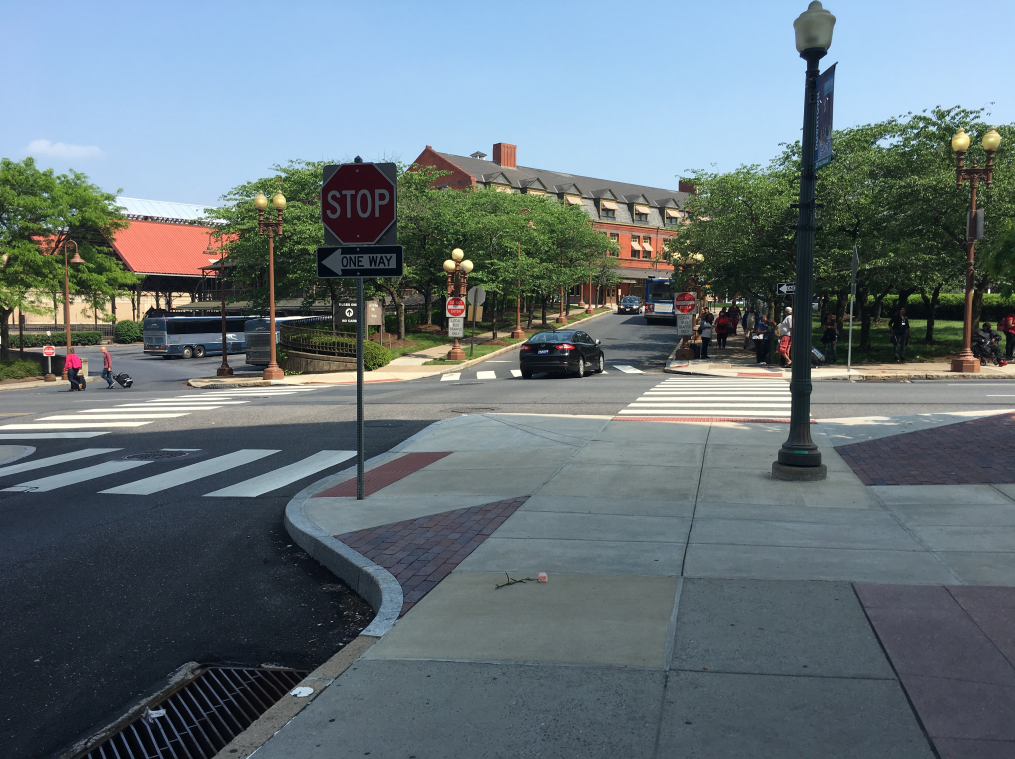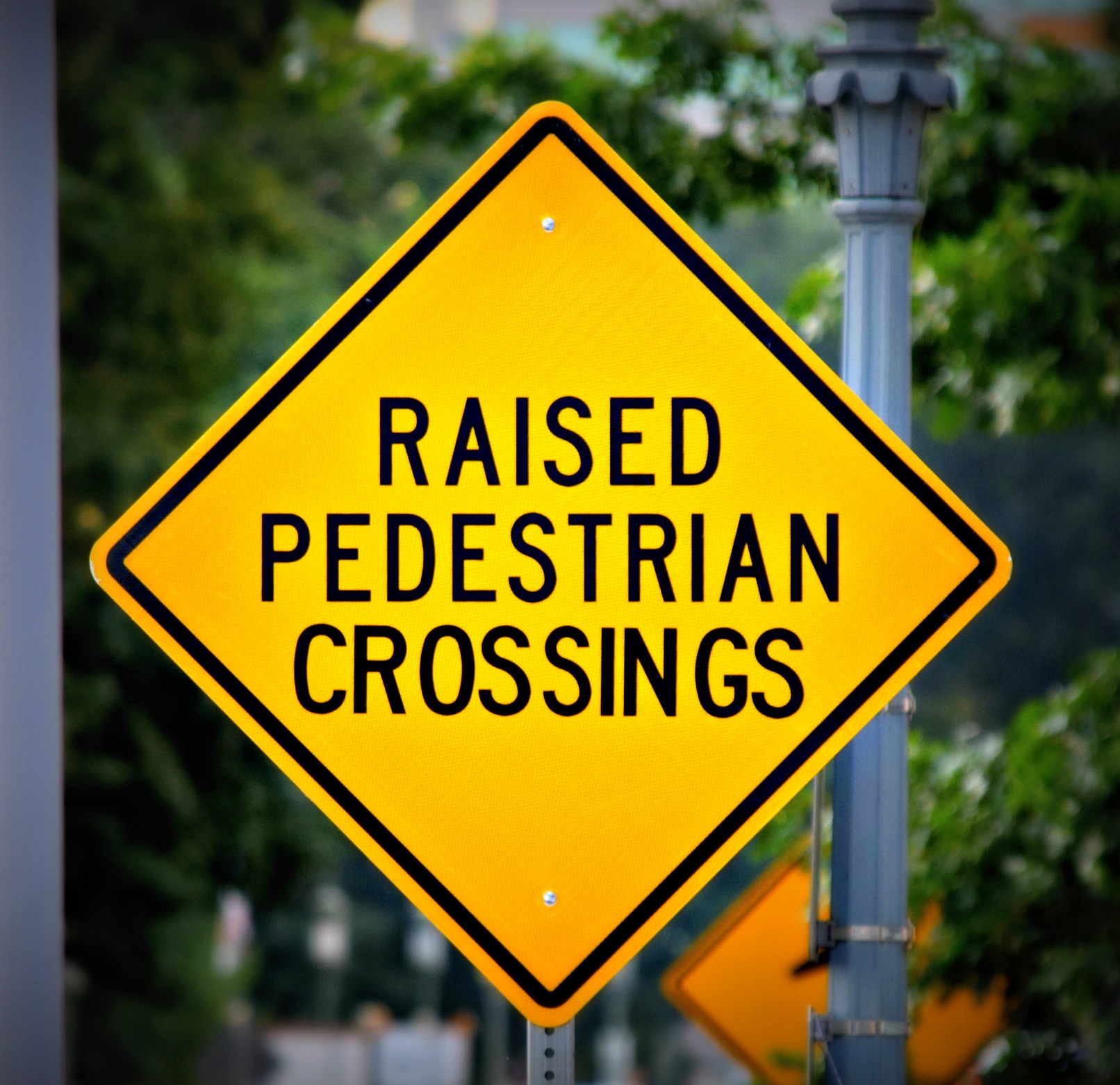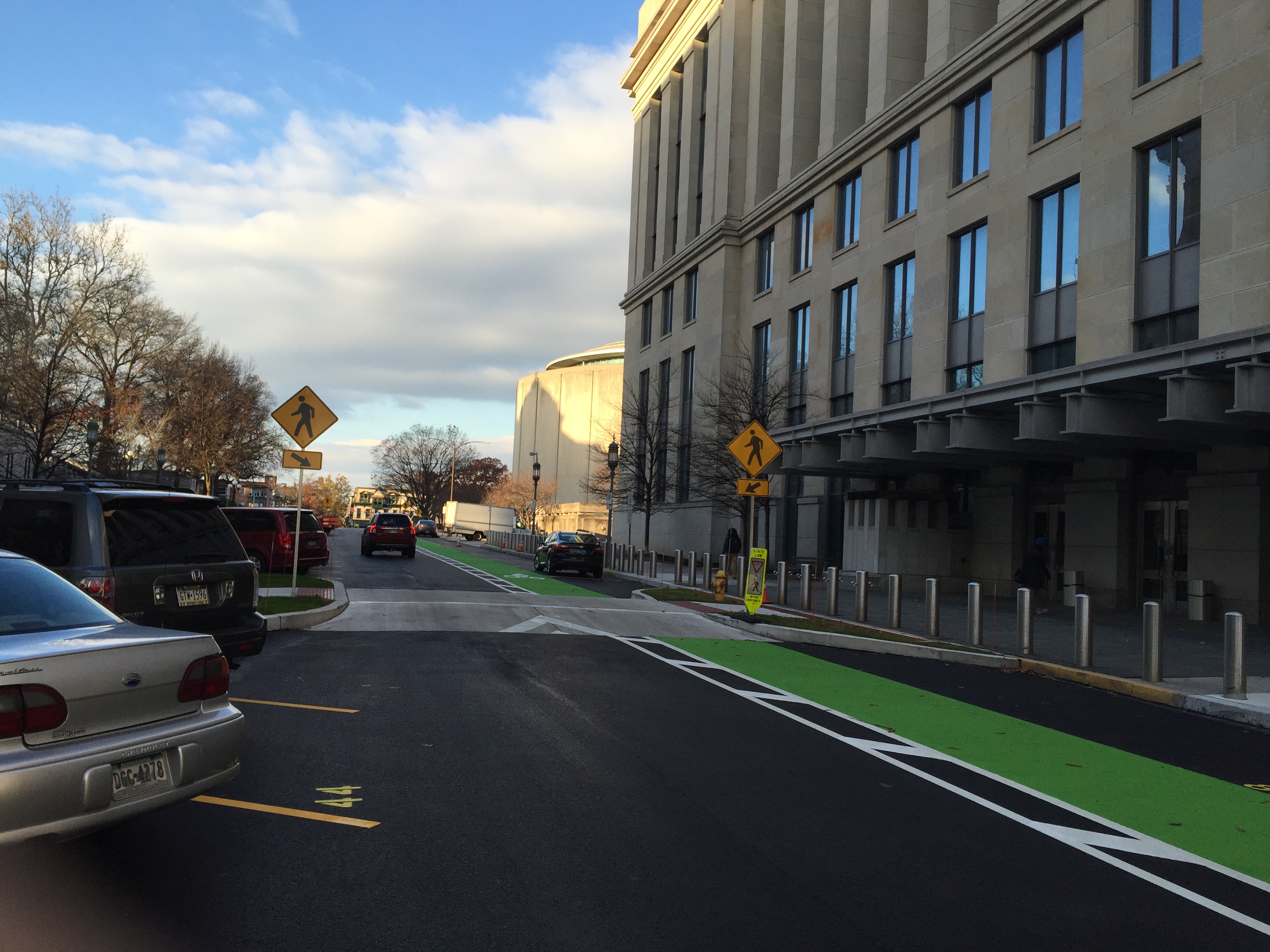Safe Transportation for Every Pedestrian
Safe Transportation for Every Pedestrian (STEP) is the systemic application of cost-effective countermeasures with known safety benefits that can help reduce pedestrian injuries and fatalities at crossing locations. STEP is a
Federal Highway Administration (FHWA) Every Day Counts Round 5 (EDC-5) innovation that Pennsylvania championed.
How Does It Work?

PennDOT is focusing on implementation of six of the seven STEP countermeasures promoted by FHWA to help improve pedestrian safety at various intersections in Pennsylvania:
Rectangular Rapid Flashing Beacons (RRFB) – These LED-light beacons use an irregular flash pattern at mid-block or uncontrolled crossing locations. The device includes two rectangular-shaped yellow indicators, each with an LED-array-based light source, that flash with high frequency when activated. RRFBs can make crosswalks and/or pedestrians more visible at a marked crosswalk.
Leading Pedestrian Intervals (LPI) – Pedestrian signals utilizing LPIs allow pedestrians to walk three to seven seconds before vehicles get a green signal to turn, decreasing the likelihood of a conflict or crash. LPIs help reduce conflicts between pedestrians and left- or right- turning vehicles and can provide enhanced safety for slower moving pedestrians.
Crosswalk Visibility Enhancements – Enhanced crosswalk lighting, signage and markings can help drivers see pedestrians and help pedestrians decide where to cross. Features of this countermeasure include high visibility markings of the standard parallel lines, parking restrictions around crosswalks, advance “stop” or “yield” markings, signs and curb extensions.
Raised Crosswalks – Elevated crossings ensure pedestrians are more prominent in the driver’s field of vision and allows them to cross at the same level with the sidewalk. The crosswalk is often defined with paint or special paving materials.
Pedestrian Crossing/Refuge Islands – This countermeasure provides a safe place for pedestrians to stop at the midpoint of the roadway before beginning the next stage of the crossing. This stop reduces the amount of time a pedestrian is on the roadway, helps enhance visibility at the crossing and forces approaching vehicles to slow down.
Road Diets – A typical road diet converts an existing four-lane, undivided roadway to two through-lanes and a center, two-way left turn lane. This reduces the number of lanes pedestrians must cross, and often leads to reduced vehicle speeds. A road diet can be a relatively low-cost safety solution, especially if only pavement marking modifications are required to implement the roadway reconfiguration.

What Are The Benefits?
STEP provides proven solutions that are known to increase safety for pedestrians by focusing on improvements at uncontrolled crossing locations and targeting infrastructure investments to address safety concerns. They can also enhance the quality of life for pedestrians of all ages and abilities.
DID YOU KNOW...
- Crosswalk visibility enhancements can reduce crashes by 23-48 percent.
- Road diets can reduce total crashes by 19 percent in urban areas and 47 percent in suburban areas.
- LPIs can reduce pedestrian-involved crashes by 13 percent.
Innovation in Motion
As part of the
PennDOT Connects Program, road diets were implemented in the Borough of Youngwood, Westmoreland County. This borough neighbors several high-speed roadways, including Interstate 70, the Pennsylvania Turnpike, PA Route 66 (part of the Greensburg Bypass), and the U.S. Route 30 Bypass. Even the main route through town, U.S. Route 119, is four lanes with high-speed traffic. These road diets are also being implemented as part of the U.S. Route 119 Reconstruction Project, which includes changing the lanes from 12 feet wide to 11 feet wide with eight-foot parking lanes and installing
chicanes, a type of S-curve configuration. In addition to road diets, other safety countermeasures planned for this project include optical speed bars painted on the roadway to give drivers a visual cue for how fast they are traveling. The project will also extend sidewalks to the nearby bike trail.

PennDOT also implemented another STEP safety countermeasure by constructing several raised crosswalks at the Capitol Complex in Harrisburg, Dauphin County. These crosswalks have proven to help increase pedestrian visibility and reduce vehicle speeds. Since implementation, PennDOT has reported an increase in drivers yielding to pedestrians waiting to use the crosswalks.
More Information
For more information about this innovation, contact the
STIC Management Team.